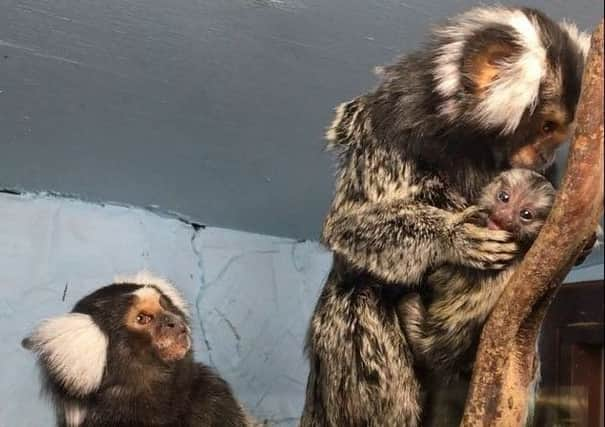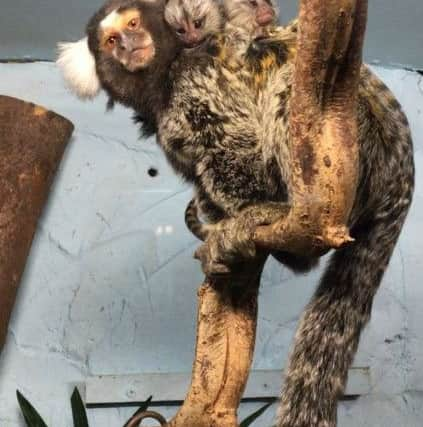Little monkeys born to please crowds at Sussex zoo this autumn


The balls of fluff are expected to impress crowds at the zoo offering visitors something adorable to speak about.
The small monkeys are a popular attraction at the park and currently cling to their mother’s back as they explore their surroundings.
Advertisement
Hide AdAdvertisement
Hide AdSue Woodgate, the manager of the zoo, says she is pleased with the new babies.


She says: “We are absolutely delighted with the new arrivals. Our visitors really love to see the baby monkeys playing with their parents, when they get the opportunity.
“We do not know the sex of the babies and they have not yet been named, but we are hoping to pool some inventive name suggestions soon.”
The common marmoset is one of the smallest species of monkeys. Its name, when translated in English, is dwarf.
Advertisement
Hide AdAdvertisement
Hide AdA male marmoset would weigh up to one pound with the size being even less for a female. Therefore the babies are currently too small to be handled by zookeepers.
Sophie Leadbitter, deputy head zoo keeper, says everyone is very excited by the birth of the twins.
She said: “Jasmine is a first time mother and she has taken to motherhood like a duck to water. She is so natural with her babies and really caring for them well.
“Abu, the twins father, was only introduced to Jasmine recently so we are really pleased the two have not only hit it off but have produced two stunning babies for us already.
Advertisement
Hide AdAdvertisement
Hide Ad“Common marmoset babies will cling to their parents backs for the first two weeks of their lives.
“After this point they start to be a bit more daring and will crawl around their parents back and start to explore.
“Group care is very important for common marmosets, and everyone will take their turn looking after the young.
“The birth of the twins was really exciting for the zoo and we have all fallen in love with them already.”
Advertisement
Hide AdAdvertisement
Hide AdCommon marmosets can be found in tropical rainforests and secondary forests north-east of Brazil.
Their popularity at the zoo continues to grow with many commuting to take a glimpse.
The zoo offers a wide range of different animals to see.